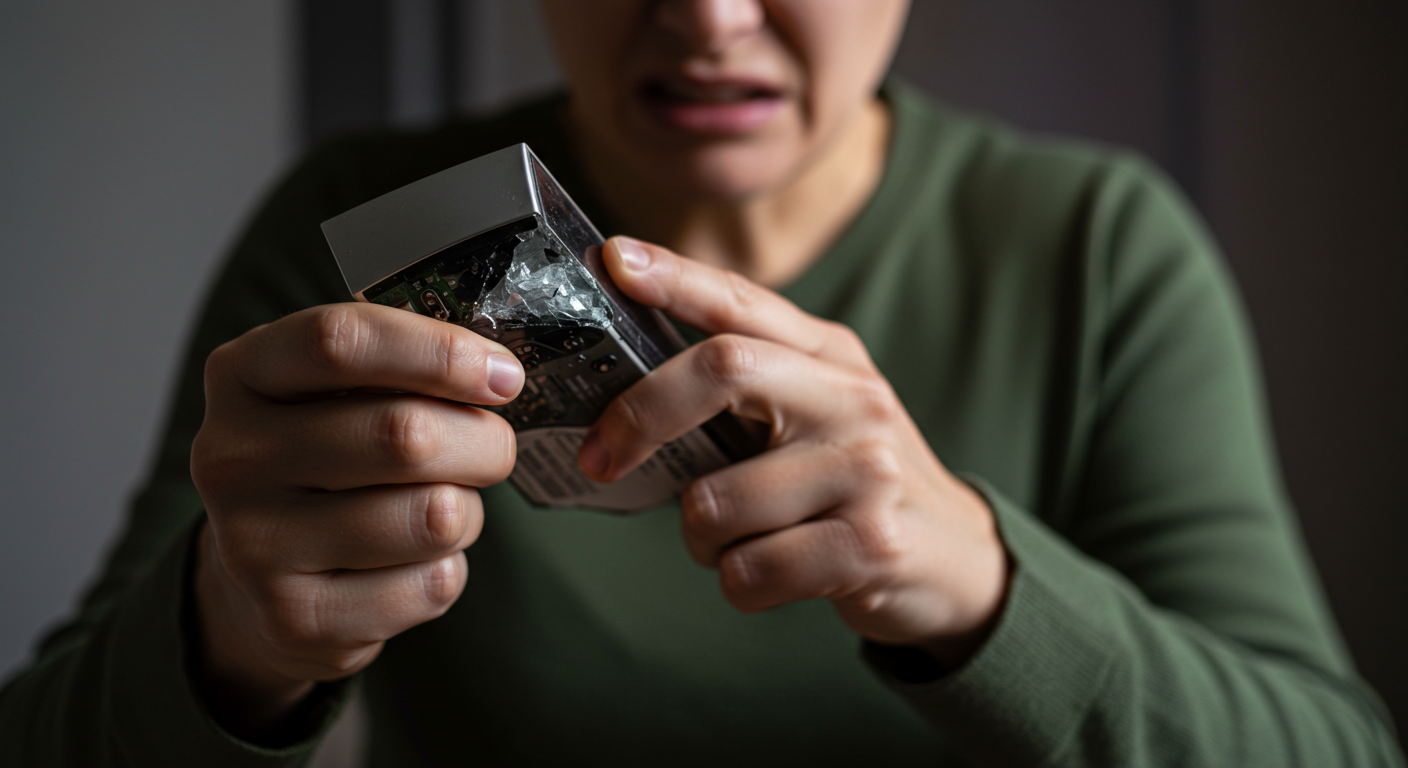The American Dream includes the freedom to buy amazing products that make our lives better. But sometimes, that dream turns into a nightmare. Just ask Mike from Milwaukee. He bought a new power drill for some home improvements. The drill’s faulty switch caused it to start unexpectedly – and sent him straight to the emergency room.
Stories like Mike’s aren’t rare. Every year, thousands of Wisconsin residents get hurt by defective products. From household appliances to children’s toys, any product can have dangerous flaws. These injuries can be severe. Some are even fatal.
You bought a product expecting it to make your life better – not worse. When manufacturers put dangerous products into the marketplace, they need to take responsibility. Let’s talk about your rights when a defective product hurts you or someone you love.
Wisconsin Product Liability Law
Wisconsin has strong laws to protect you from dangerous products. Our state’s product liability law (Wis. Stat. § 895.047) gives you the right to seek compensation when a defective product causes harm.
These laws recognize that manufacturers have a special duty to make safe products. They must carefully design their products. They need to test them properly. And they have to warn you about any risks.
The law uses something called “strict liability.” This means you don’t always have to prove the manufacturer was careless. If their product was defective and hurt you, that’s often enough to hold them responsible.
Negligence
Sometimes, manufacturers mess up. Maybe they rushed production or cut corners on safety testing. That’s called negligence.
For example, if you bought a coffee maker that didn’t have a proper heat sensor, the manufacturer likely knew about this problem but kept selling the product anyway. When the coffee maker overheats and starts a fire in your kitchen, the manufacturer’s negligence is apparent.
Breach of Warranty
When you buy a product, it comes with specific promises. These are called warranties. Some are written on the package. Others are just understood – like the fundamental premise that a product will be safe when used normally.
Let’s say you buy a ladder rated to hold 300 pounds. You weigh 200 pounds, but the ladder breaks during everyday use. That’s a breach of warranty. The manufacturer promised something they didn’t deliver.
A Note on the Statute of Limitations
Due to the statute of limitations, you can’t wait forever to take action after getting hurt by a defective product. In Wisconsin, you usually have three years from when you discover (or should have discovered) your injury to file an injury claim. For strict liability cases, you must file within 15 years of when the product was made. There’s also a 25-year limit for cases involving chemically identical products.
Types of Product Defects
Many people aren’t sure if their product has an actual defect that qualifies for a legal claim. Let’s clear that up. There are three main types of product defects that can lead to a liability claim.
Design Defects
Some products should have never left the drawing board. They’re dangerous from the start because of fundamental flaws in their design.
These flaws often stem from mistakes, lack of proper testing, or intentional cost-cutting measures by manufacturers. The infamous Ford Pinto case perfectly illustrates a design defect. Ford designed the Pinto’s fuel tank in a way that made it highly vulnerable to rear-end collisions.
Even worse, internal documents revealed that Ford knew about this problem but calculated it would be cheaper to pay settlements for deaths and injuries than to fix the design.
Manufacturing Defects
Sometimes, the design is fine, but something goes wrong during production. That’s a manufacturing defect. Even small mistakes can be dangerous. A single loose screw in a highchair could cause it to collapse. A tiny crack in a bike helmet might make it useless in a crash.
Marketing Defects
Marketing defects, also known as Failure to Warn, happen when companies don’t adequately warn consumers about potential hazards associated with their products.
Companies must provide adequate warnings and instructions about how to safely use their products. That’s why you’ll often see warnings on labels that might seem obvious – like “do not drink” on bleach bottles. If it’s there, it’s likely because someone tried it and then held the company liable for not warning against it.
Marketing defects also include false advertising claims or misrepresentations of products.
Proving a Product Liability Claim
Now for the tricky part. You can bet that the company behind a faulty product won’t easily admit their products hurt people. They have teams of lawyers ready to fight your injury claim.
That’s why evidence matters so much. Keep the product that hurts you if possible. Don’t throw away the packaging. Save your receipts and medical records. Take pictures of your injuries. Expert witnesses often play a crucial role, too. Engineers can explain why a product failed. Doctors can link your injuries to the defect.
In order to prove a product liability claim, the plaintiff must establish three main elements:
The product was defective.
You’ll need to show something was wrong with the product. Maybe it broke too quickly. Perhaps it lacked basic safety features. Or it didn’t have proper warnings.
The defect existed when the product left the manufacturer’s control.
The problem needs to be traced back to manufacturer negligence. If you modified the product or used it wrong, that’s different. But if it comes to you with a defect, the manufacturer is responsible.
The defect caused the injury.
Your injury must link directly to the product’s defect. If a faulty airbag didn’t deploy during a crash and you got hurt, that’s a clear connection.
Who Can Be Held Liable?
When a product hurts you, your first thought might be to blame the store where you bought it. But the story usually starts way before the product hits store shelves.
Manufacturers
The company that made the product usually bears the most responsibility. They control the design, run the factory, and write the warnings.
Manufacturers can be responsible in two ways. They might create a bad design that makes every product dangerous. Or they might make mistakes during production that affect some products but not others.
Distributors
Think of distributors as the middlemen. They move products from factories to stores. They have a duty to check for obvious problems. If they notice defects but ship the products anyway, they share the blame.
Wholesalers
Wholesalers buy products in bulk and sell them to retailers. Like distributors, they should watch for defects. If they spot problems but keep selling, they’re part of the problem.
Retailers
Your local store has responsibilities as well. They can’t knowingly sell dangerous products and should pull recalled items from shelves. If they don’t, they might be liable for your injuries.
Seeking Compensation
A defective product can turn your life upside down. Wisconsin law lets you seek money for your losses, including:
- Medical bills: Past and future treatment costs
- Lost wages: Money you couldn’t earn while injured
- Pain and suffering: Physical and emotional distress
- Property damage: Things the defective product destroyed
- Punitive damages: Extra money to punish lousy conduct
Class Action Lawsuits
Since products are, by nature, mass-produced and distributed, it is common for multiple people to suffer similar injuries from a defective product. In some of these cases, a class action lawsuit might make sense. You join forces with other victims, share legal costs, and face the manufacturer together.
Class actions work well for more minor claims. But if you have serious injuries, an individual lawsuit might be better. Talk to a lawyer about your options.
The Role of a Personal Injury Attorney
That brings us to our next point. Taking on a giant corporation alone isn’t wise. They have deep pockets and skilled lawyers. Even if you win, you might not get the full amount you deserve.
A personal injury attorney investigates your case thoroughly. They find all responsible parties and prove the product was defective. Most importantly, they know what your case is worth and won’t let you settle for less.
Conclusion
An injury from a defective product isn’t “just bad luck” or “just an accident.” It’s a severe violation of consumer safety. You have consumer rights. You deserve compensation for medical bills, lost wages, and suffering.
Wisconsin’s product liability laws are here to protect you. But you need to act fast and smart. Evidence disappears, and time limits expire, so don’t wait to get help.
Were you or a loved one hurt by a defective product? Contact Vanden Heuvel & Dineen, S.C. for a free consultation. We’ll review your case and explain your options.
For more safety information, visit the Consumer Product Safety Commission at www.cpsc.gov.




